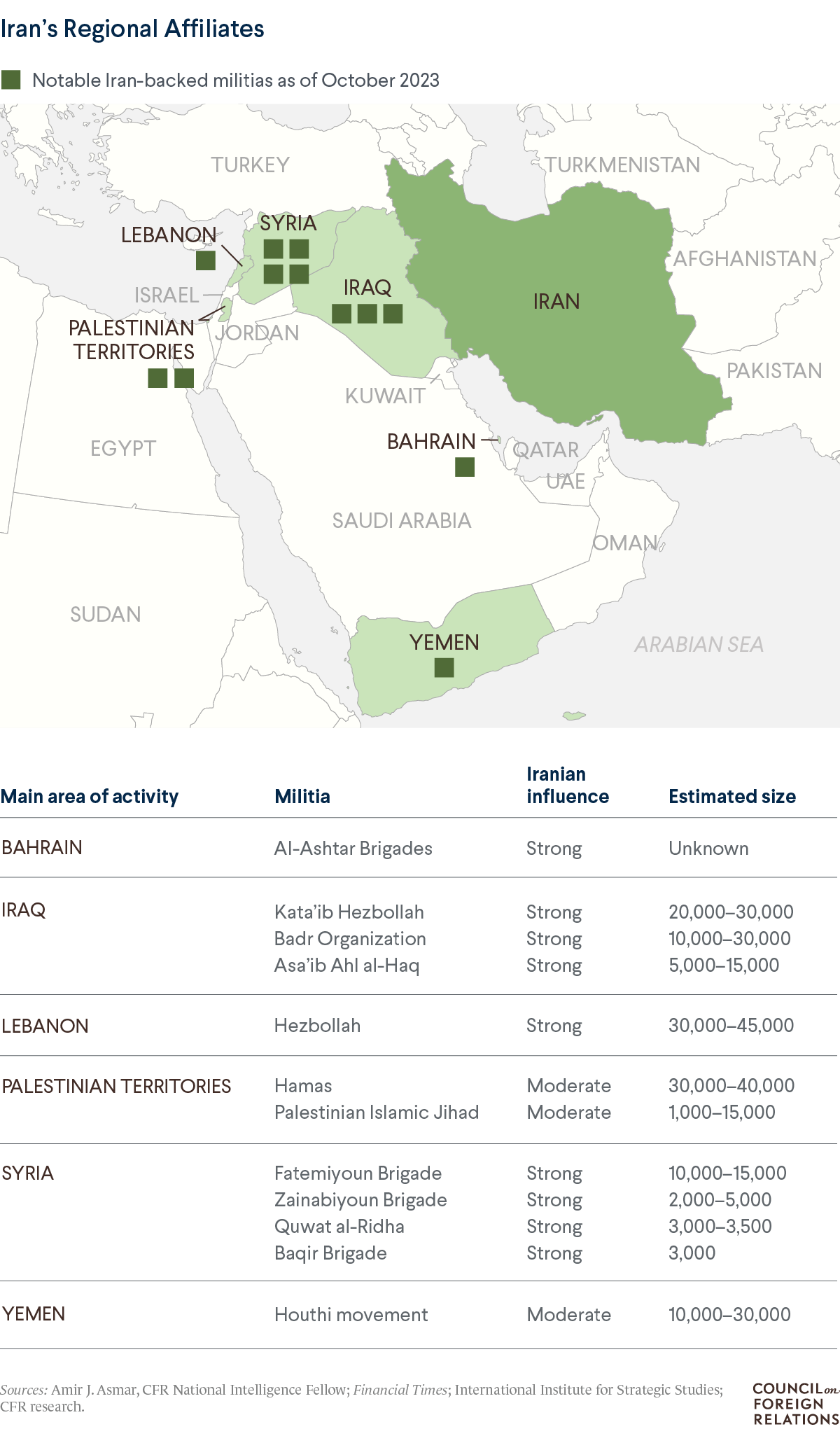In the four decades since its Islamic Revolution, Iran has formed and supported an expanding number of allied fighting forces throughout the Middle East. Iran’s Quds Force, part of the Islamic Revolutionary Guard Corps (IRGC), serves as the main point of contact with these groups, providing them with training, weaponry, and funds to promote Iranian regional objectives. Fighters from Shiite Muslim–majority countries such as Iraq and Lebanon compose Iran’s main proxies, but groups in Sunni-majority Afghanistan, the Palestinian territories, and Syria have also formed associations with Iran. At the heart of this network is Hezbollah, a Lebanese political party and militant group infamous for its acts of terrorism, which has helped Iran bridge Shiite Arab–Persian divides. Hezbollah also helped Iran support the Bashar al-Assad regime in the civil war in Syria, where it worked to bring other militias to the regime’s defense.
What are Iran’s motives?
More From Our Experts
Groups acting on Iran’s behalf have often attacked U.S. forces, and experts say Iran hopes to further leverage its growing network of partners to move equipment and personnel across the Middle East to bolster the country’s drive for regional hegemony and remove Western powers. In recent years, Iran has sought to improve cooperation among these forces to form a more united “Axis of Resistance” against mutual enemies, experts say. Israel, a major U.S. ally, also faces regular attacks from Tehran-backed groups, namely Hamas, Hezbollah, and Palestinian Islamic Jihad, who share Iran’s animosity toward Israel and oppose its existence.
More on:
Acting through proxies is a method of eluding responsibility; for instance, Hamas’s October 2023 assault on Israel showed signs of coordination with Iran, and amid the ensuing Israel-Hamas war, U.S. officials blamed suspected proxy forces of Iran for attacks that injured dozens of troops on U.S military bases in Iraq and Syria. Washington also said support from Tehran enabled Yemen’s rebel Houthi movement to fire missiles toward Israel and attack commercial ships with alleged Israeli ties in the Red Sea, actions the Houthis called a show of solidarity with Hamas. But Iran has often avoided direct blame for such violence.

The World This Week
A weekly digest of the latest from CFR on the biggest foreign policy stories of the week, featuring briefs, opinions, and explainers. Every Friday.
Daily News Brief
A summary of global news developments with CFR analysis delivered to your inbox each morning. Most weekdays.
Think Global Health
A curation of original analyses, data visualizations, and commentaries, examining the debates and efforts to improve health worldwide. Weekly.
By entering your email and clicking subscribe, you're agreeing to receive announcements from CFR about our products and services, as well as invitations to CFR events. You are also agreeing to our Privacy Policy and Terms of Use.
More on: